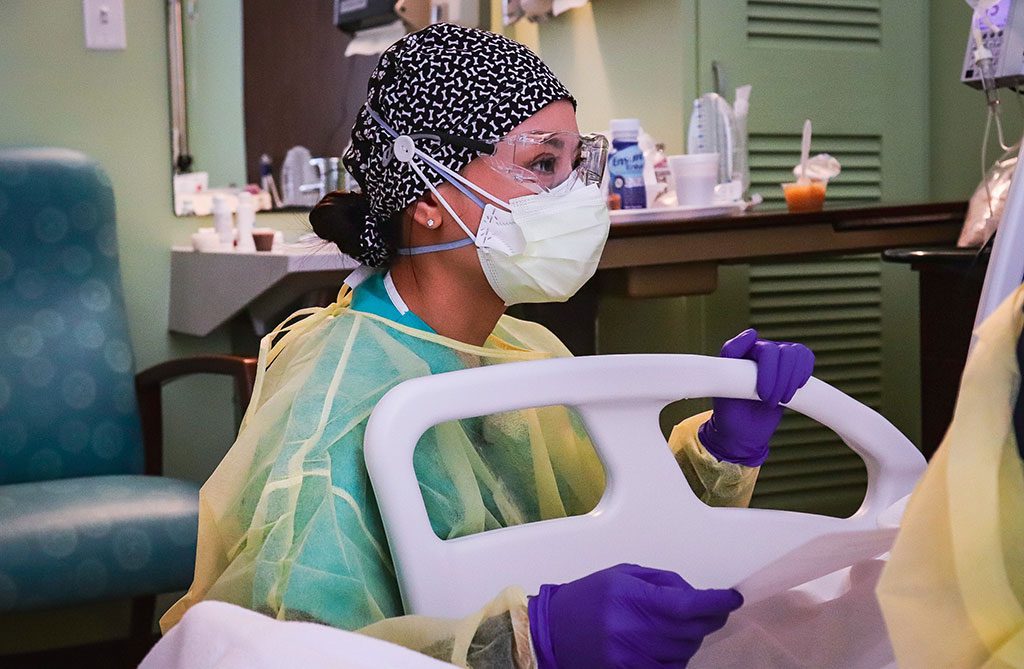The U.S. federal government, through the Centers for Disease Control and Prevention (CDC), is investing $2.1 billion in American Rescue Plan funding to strengthen and equip state, local, and territorial public health departments and other partner organizations with the resources needed to better fight infections in U.S. healthcare facilities, including COVID-19 and other known and emerging infectious diseases.
The funding aims to support rapid response to detect and contain infectious organisms, enhance laboratory capacity, and engage in innovation targeted at combating infectious disease threats. Improvements in infection prevention will span 6,000 hospitals, 15,400 nursing homes and other long-term care facilities, 7,900 dialysis clinics, and 4,700 ambulatory surgery centers, and will extend to other outpatient settings.
Additionally, these investments will help address the rise of healthcare-associated infections, which increased as U.S. hospitals were inundated by COVID-19—reversing national progress seen prior to the pandemic.
Over the next 3 years, CDC will issue $1.25 billion of the total to 64 state, local, and territorial health departments to support this work. Initial awards totaling $885 million will be made in October 2021 to these jurisdictional health departments.
CDC will use the majority of this initial funding in October, $500 million, to support State-based nursing home and long-term care strike teams. The strike teams will allow jurisdictions to provide surge capacity to facilities for clinical services; address staffing shortages at facilities; and strengthen infection prevention and control (IPC) activities to prevent, detect, and contain outbreaks, including support for COVID-19 vaccine boosters.
The remaining $385 million to be awarded in October 2021 will go to state, local, and territorial health departments to strengthen five critical areas:
- Strengthening state capacity to prevent, detect, and contain infectious disease threats across healthcare settings: CDC will provide significant infection prevention and control assistance to public health departments to work with healthcare facilities to improve the quality of healthcare; strengthen interventions for the prevention and containment of infectious diseases to minimize the spread of infection in a variety of healthcare settings; identify, address, and monitor healthcare-related disparities and health equity; and increase capacity to investigate outbreaks of healthcare-associated infections.
- Laboratory capacity for healthcare: Funds provided will also increase state and regional laboratory capacity to conduct surveillance for emerging pathogens to better identify patients infected with or carrying infectious disease threats, such as antibiotic-resistant germs like “nightmare bacteria” carbapenem-resistant Enterobacterales (CRE) and Candida auris. Throughout the pandemic, there have been outbreaks of antibiotic-resistant pathogens in COVID-19 units and other healthcare settings.
- Project Firstline: Funds will expand on efforts to design and implement effective infection prevention and control training and education to frontline healthcare staff, leveraging a unique collaborative of healthcare, public health, and academic partners. In its first year, CDC’s Project Firstline and its partners developed more than 130 educational products and hosted more than 200 educational events on infection prevention and control, engaging approximately 16,300 healthcare workers from professions ranging from environmental services workers, to nurses, to physicians. Its infection prevention and control messages reached millions of individuals through more than 1,700 social media posts shared on CDC and partner channels.
- National Healthcare Safety Network (NHSN): CDC will increase data and monitoring through NHSN to determine where and when infections occur in healthcare settings and target IPC interventions. Funds will support state efforts to improve the NHSN data collection from healthcare facilities. This includes state coordination, expansion in reporting, and providing greater technical assistance to facilities that are reporting healthcare quality and preparedness-related data.
- Antibiotic Stewardship: Funds will support state data analyses of antibiotic use and implement programs to improve antibiotic prescribing across communities, including addressing health disparities related to antibiotic use. Despite being ineffective against COVID-19, antibiotics have been commonly prescribed to patients during the pandemic, increasing the risk of antibiotic resistance.
In addition to amounts provided to state, local and territorial health departments, $880 million will be used over several years to support healthcare partners, academic institutions, and other nonprofit partners to develop new prevention interventions and capacities for infection prevention and control training, data collection, and technical assistance.
Recent studies have shown substantial increases in healthcare-associated infections during the pandemic in central line-associated bloodstream infections (CLABSIs), catheter-associated urinary tract infections (CAUTIs), ventilator-associated events (VAEs), and methicillin-resistant Staphylococcus aureus (MRSA) bacteremia. The data show an urgent need to strengthen infection prevention and control capacities and build healthcare resiliency to withstand future pandemics and maintain national prevention progress.


